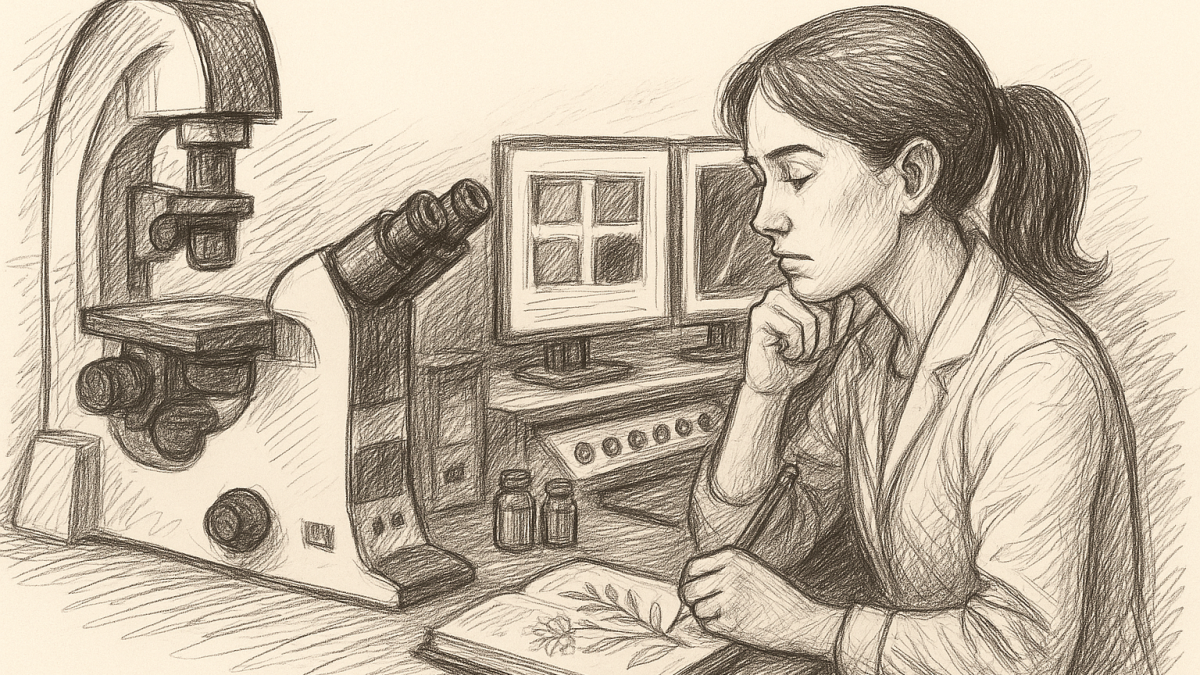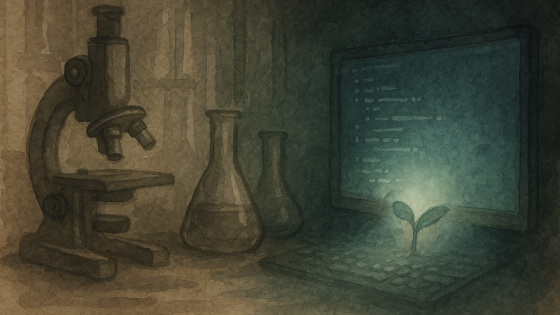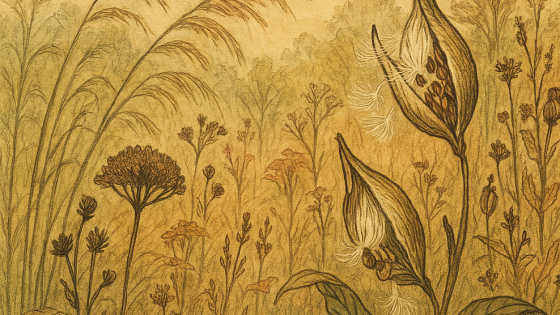Beyond the Lens: How Cell Division Changed My Approach to Science Communication

Discover how the hidden world of cell division inspired a new, artful approach to science communication where stories spark curiosity.
Ever struggle with trying to share your research?
Well, I want to share a story that came about in the accumulation of the hours at the microscope and the accompanying contemplative hours that come in between. One that begins in a world so small, you’d need that microscope just to see some of it, but not necessarily learn it.
However, there, in that hidden world, under the microscope, plant cells perform their secret dance. Imagine tiny builders inside every leaf and stem, splitting and shaping, laying down walls and scaffolds like they’re constructing a city no one else can see. Under the lens, it’s like watching a silent symphony, molecules and membranes moving in perfect time, weaving the fabric of life itself. It’s beautiful, almost magical.
But here’s the thing: trying to share that magic, to explain what’s seen, often means running into a wall. Talking about proteins and pathways, about all the tiny gears turning beneath the surface, sometimes makes listeners’ eyes glaze over. It can feel like speaking a language no one else understands.
That’s when it hits you: the real gap between scientists and everyone else isn’t just about complicated words. It’s about the way the world is seen. For some, science is a second language, but for most folks, it might as well be a secret code. Yet the wonder, the pure awe of it all, that’s something everyone can feel.
So, the approach changes. Instead of cramming every detail into explanations, the focus shifts to telling stories. “Picture a crew of builders inside a plant, working together to raise walls and lay down roads, turning a single cell into a bustling metropolis.” Or, cell division becomes a grand orchestra, each part playing its melody, coming together in harmony. And you know what? People start to lean in. Their eyes light up. Suddenly, they can see what’s being seen.
The real turning point comes when art enters the mix. Sculpting what’s seen under the microscope, turning invisible processes into shapes you can hold in your hand. Even making music inspired by the rhythms of cell division. Through art, there’s a new way to share the beauty of science, not just with words, but with experiences anyone can feel.
It recalls Galileo, peering at the Moon through his telescope. He saw more than craters and shadows, he saw depth, because he understood art. He used light and darkness, just like a painter, to reveal secrets no one else had noticed. Without that artist’s eye, the world might never have seen what he saw.
One of the most surprising lessons from sharing science wasn’t just about what I was saying, it was about how I was saying it. When I stopped rattling off numbers and started painting pictures with words, people leaned in. They wanted to know more. They felt comfortable asking questions. It felt less like a lecture and more like a story unfolding in the flicker of firelight.
Maybe you’re wondering: how do you start telling your data’s story without getting tangled up in statistics? I’ve put together the most helpful tips I’ve come across in my training. Think of them as kindling to get your own storytelling fire going:
Tips to Start Reframing Your Information
- Find the Heart of Your Message: Before you speak, ask yourself, “What’s the real takeaway here? What do I want people to remember when the fire dies down?”
- Swap Numbers for Imagery: Instead of “a 30% increase,” say, “Suddenly, the room felt twice as bright.” Let your audience see, feel, or even taste the change
- Highlight the Journey: Talk about how things shifted over time. “At first, nothing seemed to change, but then, like the first green shoots after winter, new growth appeared everywhere.”
- Use Relatable Comparisons: Anchor your message in familiar territory. “It was as if the cells were building a wall, brick by brick, until the whole structure stood tall.”
- Share Real Experiences: Bring in a voice, yours or someone else’s. “One participant told me, ‘I finally feel like I’m part of something bigger.’ That stuck with me.”
- Practice Around Your Own Campfire: Try explaining your findings to a friend or family member. Watch what makes their eyes light up, and lean into that
Tips to Start Simplifying Interdisciplinary Concepts
Interdisciplinary work is more important than ever, and not just in STEM, but it can be tricky to start to explain. Here is some more kindling to get you going!
- Start With a Common Problem: Anchor your explanation in a real-world issue everyone cares about. (We are trying to ripen fruit more predictably!)
- Use Everyday Analogies: Relate complex ideas to familiar experiences. (non-browning apples)
- Break It Down by Roles: Explain each discipline’s part in simple, clear terms. (Biophysics does math for the parts we can’t actually measure, Plant Biology does anything squishy or dirty that we can actually test: Break it down as simply as your audience needs)
- Tell a Story: Weave the disciplines into a narrative that shows how they work together.
- Highlight the Big Picture: Emphasize what interdisciplinary work achieves, not the technical details. (Together, they can make more accurate predictions to achieve the goal.)
- Invite Questions: Encourage curiosity and make it clear that learning together is the goal.
You can make even the most complex collaborations understandable and exciting, helping everyone appreciate the power of teamwork across fields.
The beauty of this approach is that it invites everyone to gather closer, to see themselves in the story. You don’t need to recite every figure or chart. Instead, you’re giving your audience a place by the fire, letting them experience the wonder for themselves.
So next time you have a discovery to share, remember: it’s not about the numbers, it’s about the spark. Find the story, light it up, and watch curiosity catch like wildfire.
Baram, Tsabari, A., & Osborne, J. (2015). Bridging science education and science communication research. Public Understanding of Science, 24(4), 422, 430.
Brownell, S. E., Price, J. V., & Steinman, L. (2013). Science communication to the general public: why we need to teach undergraduate and graduate students this skill as part of their formal scientific training. Journal of Undergraduate Neuroscience Education, 12(1), E6, E10.
Dahlstrom, M. F. (2014). Using narratives and storytelling to communicate science with non-expert audiences. Proceedings of the National Academy of Sciences, 111(Supplement 4), 13614, 13620.
O’Connor, J. J., & Robertson, E. F. (2022). Galileo Galilei. MacTutor History of Mathematics Archive.
Categories: : All, micro, SciCom Tips
 Rosalie Sinclair
Rosalie Sinclair 



